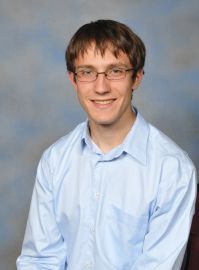Modeling Laser Induced Shocks in Fluids and Solids
Piotr Fidkowski, Massachusetts Institute of Technology

The goal of this research is accurate simulation of wave and shock propagation in fluids and particularly solids. Currently, the driver is numerical validation of a laser induced shock experiment. In this experiment, a concentric ring is heated by a laser pulse, and a converging shock wave is formed. Pressures in the gigapascal range are observed in the initial shock ring, and much higher pressures are reached at the center of the shock. This experiment allows for accurate probing of material properties at extremely high pressures, although numerical analysis is required to interpret the results. In order to allow for future 3D effects such as lensing of the shock wave to be displayed, the simulation is done using a full 3D finite element formulation. A large deformation Lagrangian method is used, with explicit time stepping, although there is also the capability for parallel implicit time stepping. Currently, the simulations are focused on shock propagation in water using a Newtonian fluid constitutive response with the Tait equation of state. For shock capturing and stabilization, both linear and quadratic artificial viscosity are included in the material response. However, current results suggest that a higher order artificial viscosity may be required. Ultimately, the aim of this research is to extend techniques for finite element simulation of shock propagation. Possible directions for research include the application of higher order Discontinuous Galerkin methods and massively parallel implicit methods.
Abstract Author(s): Piotr Fidkowski


